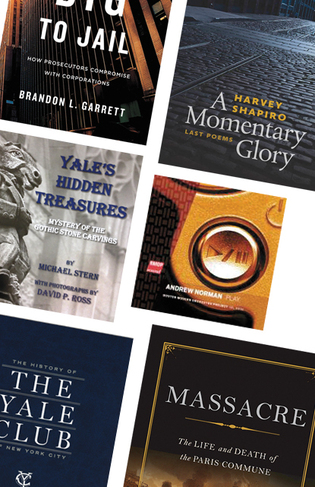 loading
loading
Arts & CultureOutput View full imageMassacre: The Life and Death of the Paris Commune About 140 years before the brief flourishing of freedom known as the Arab Spring, the downtrodden residents of Paris declared a spring of their own: they established the egalitarian Commune in March 1871 to replace government rule. Merriman writes a compelling tale of a movement during which, said the painter and Communard Gustave Courbet, Parisians were “masters of their own fate”—until troops took back control that May in a horrific bloodbath.
A Momentary Glory: Last Poems After a long and distinguished career as an English teacher and New York Times editor, prolific poet Shapiro passed away in 2013. In addition to his published work, he left behind a cache of unpublished poems on such topics as his service in World War II, poets he loved, love and sex, and, of course, aging. “The bread of life is what we die to taste. / I taste it in your poems,” he wrote in an homage to William Carlos Williams. It’s equally delicious in Shapiro’s verse.
Yale’s Hidden Treasures: Mystery of the Gothic Stone Carvings One of the great joys of exploring the Yale campus is scanning the Gothic buildings for the often enigmatic stone carvings designed by James Gamble Rogers, Class of 1889, and executed in limestone and granite by an army of European craftsmen. Stern, a New Haven native, and photographer David P. Ross provide a handsome field guide to “one of the university’s best-kept secrets”: its collection of stone scholars, luminaries, mythical beasts, and gargoyles, as well as a turkey, a Skull and Bones initiation, and a Puritan on a potty.
Too Big to Jail: How Prosecutors Compromise with Corporations In the grim aftermath of the 2008 financial debacle, many people expected that entire top-level corporate suites would be emptied and their occupants marched off to prison. It never happened. In this sobering account of “what really happens when prosecutors pursue corporate criminals,” law professor Garrett explains how the federal government has become “the little guy,” the David in an ongoing battle between prosecutors and “too-big-to-fail” Goliaths.
The History of the Yale Club of New York City: A Century at 50 Vanderbilt Avenue When the Yale Club opened its James Gamble Rogers–designed headquarters in New York City in June 1915, the intention was to create “a congenial, hospitable place, human in scale,” as historian David McCullough ’55, a member and frequent guest, has described it. In a beautifully illustrated look at the highs and lows of the club’s past, journalist Steinbreder presents a fascinating account of how the club has adapted to changes over the years to remain relevant, solvent, and a “home away from home” for alumni.
Play Play, performed here by the Boston Modern Orchestra Project, is both playful and smartly played. The title refers as much to frantic video gaming as to performance skills. The work’s three movements (or “levels”) rush past, propelled by wind instruments but also by all the ambient blips and bloops one associates with old-school Atari action. An earlier piece by Norman also included here, Try, tries some of the same peripatetic symphonic tricks, but in a suspenseful rather than breezy manner. Both works sound rich and human, avoiding anything techno or mechanical. This album is a game of skill and concentration, but also plenty of fun.
The comment period has expired.
|
|